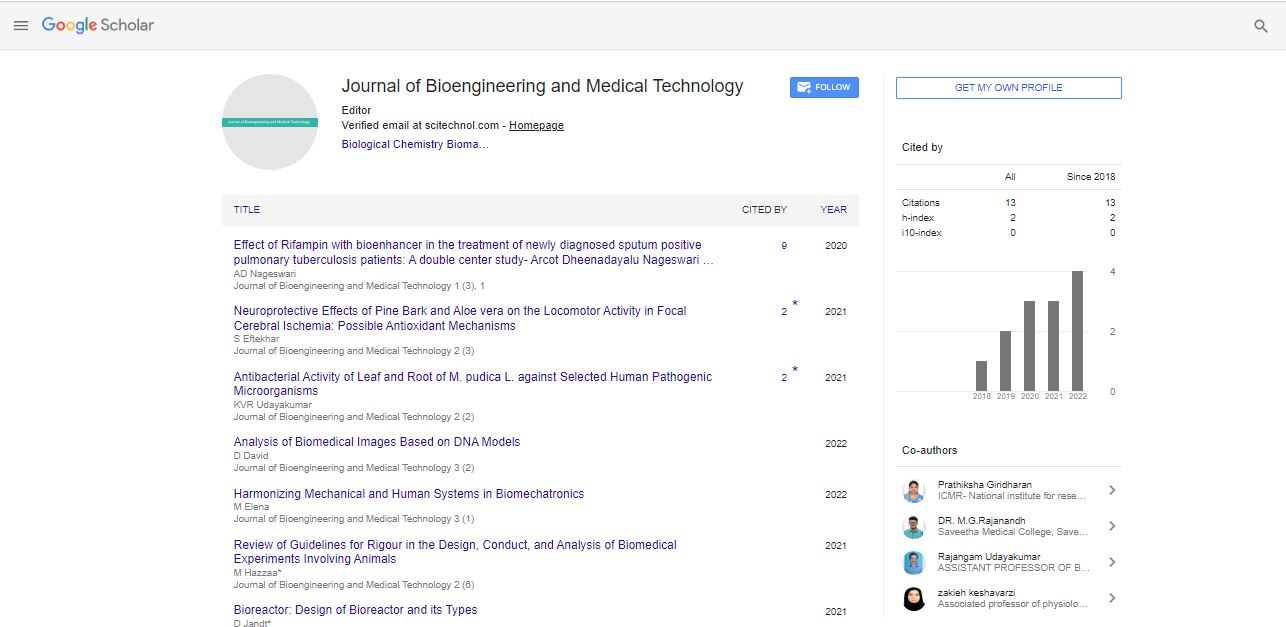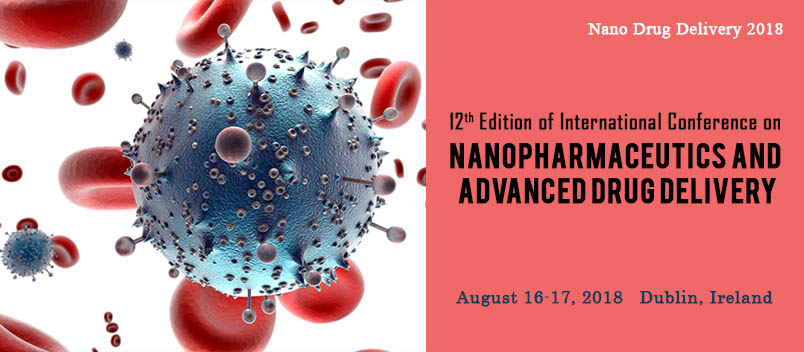Short Communication, J Bioeng Med Technol Vol: 4 Issue: 3
Biological Tissue Imaging: Illuminating Life at the Cellular and Molecular Scale
Suzy Gorman*
1Department of Molecular Biology and Biophysics, University of Connecticut Health Center, Farmington, United States of America
*Corresponding Author: Suzy Gorman,
Department of Molecular Biology and
Biophysics, University of Connecticut Health Center, Farmington, United States of
America
E-mail: gormansuzy@gmail.com
Received date: 28 August, 2023, Manuscript No. JBMT-23-118429;
Editor assigned date: 30 August, 2023, PreQC No. JBMT-23-118429 (PQ);
Reviewed date: 13 September, 2023, QC No. JBMT-23-1184279
Revised date: 20 September, 2023, Manuscript No. JBMT-23-118429 (R);
Published date: 27 September, 2023, DOI: 10.4172/JBMT.1000079
Citation: Gorman S (2023) Biological Tissue Imaging: Illuminating Life at the Cellular and Molecular Scale. J Bioeng Med Technol 4:3.
Description
Biological tissue imaging plays a pivotal role in modern life sciences, allowing us to visualize and understand the intricate structures and functions of tissues at various hierarchical levels. Biological tissue imaging has emerged as an indispensable tool for scientists and researchers across various disciplines, offering valuable insights into the architecture and physiology of living organisms. By employing a diverse range of imaging techniques, it allows us to investigate tissues' structural, functional, and dynamic aspects, shedding light on numerous biological questions.
Principles of biological tissue imaging
Imaging modalities: Biological tissue imaging employs several imaging modalities, each offering unique advantages for different applications. These modalities include light microscopy, electron microscopy, Magnetic Resonance Imaging (MRI), Computed Tomography (CT), and ultrasound, among others. Researchers choose the appropriate modality based on the specific requirements of their investigations [1-3].
Staining and labeling: To enhance the contrast and specificity of biological tissue imaging, various staining and labeling techniques are used. Fluorescent dyes, immunohistochemistry, and genetically encoded fluorescent proteins are just a few examples of methods employed to visualize specific molecules or cellular structures within tissues [4].
Image processing and analysis: In the age of digital imaging, robust image processing and analysis tools are essential. These techniques help researchers extract quantitative data and visualize complex tissue structures, enabling the quantification of parameters such as cell density, morphology, and spatial distribution [5].
Applications of biological tissue imaging
Histopathology: Biological tissue imaging is a cornerstone of histopathology, where it aids in the diagnosis and classification of diseases. Histological examinations of tissue samples, often using stained sections, reveal cellular and tissue abnormalities that inform medical decisions and therapies [6].
Cancer research: Imaging techniques such as Positron Emission Tomography (PET), Magnetic Resonance Imaging (MRI), and confocal microscopy have transformed cancer research. These methods allow for non-invasive monitoring of tumor growth, progression, and response to treatment.
Neuroimaging: In neuroscience, biological tissue imaging helps us visualize and map the brain's structure and function. Techniques like functional MRI (fMRI) and Diffusion Tensor Imaging (DTI) enable the study of neural networks, cognition, and neurological disorders[7,8].
Developmental biology: Biological tissue imaging is invaluable for studying embryonic development and organogenesis. It enables researchers to track the growth and differentiation of tissues, providing insights into developmental processes.
Regenerative medicine: Imaging techniques are crucial in regenerative medicine for monitoring tissue engineering and organ transplantation. They help assess the integration of implanted tissues and track the healing and regrowth of damaged or transplanted organs.
Emerging techniques in biological tissue imaging
Multiphoton microscopy: Multiphoton microscopy allows for deep tissue imaging with reduced photodamage. It is particularly useful for studying live tissues and thick samples, making it an ideal choice for studying complex biological systems [9].
Optical Coherence Tomography (OCT): OCT is a non-invasive imaging technique that provides high-resolution, cross-sectional images of biological tissues. It has applications in ophthalmology, cardiology, and various other fields.
Cryo-Electron Microscopy (Cryo-EM): Cryo-EM has revolutionized structural biology by enabling the high-resolution imaging of macromolecular structures. It has played a pivotal role in the determination of protein structures and has led to significant advancements in drug discovery [10].
Future prospects
The future of biological tissue imaging holds great promise. Advancements in imaging hardware and software, as well as interdisciplinary collaborations, are expected to provide new tools and insights. Innovations such as label-free imaging techniques, artificial intelligence-assisted analysis, and 3D printing of tissues for imaging represent exciting areas of development.
Conclusion
Biological tissue imaging stands at the forefront of modern scientific inquiry, facilitating the exploration of biological tissues with unprecedented detail and precision. As technology and methods continue to evolve, biological tissue imaging will play an increasingly crucial role in deepening our understanding of health, disease, and the intricate workings of life.
References
- Vaz PG, Amaral D, Ferreira LFR, Morgado M, Cardoso J (2020) Image quality of compressive single-pixel imaging using different Hadamard orderings. Opt Express 28(8): 11666-11681.
[Crossref] [Google Scholar] [Indexed]
- Liu S, Mulligan JA, Adie SG (2018) Volumetric optical coherence microscopy with a high space-bandwidth-time product enabled by hybrid adaptive optics. Biomedical Opt Express 9(7): 3137-3152.
[Crossref] [Google Scholar] [Indexed]
- Tian L, Liu Z, Yeh LH, Chen M, Zhong J, et al. (2015) Computational illumination for high-speed in vitro Fourier ptychographic microscopy. Optica 2(10): 904-911.
- Goorden SA, Bertolotti J, Mosk AP (2014) Superpixel-based spatial amplitude and phase modulation using a digital micromirror device. Opt Express 22(15): 17999-18009.
[Crossref] [Google Scholar] [Indexed]
- Edgar MP, Gibson GM, Padgett MJ (2019) Principles and prospects for single-pixel imaging. Nat Photonics 13: 13–20.
- Gibson GM, Johnson SD, Padgett MJ (2020) Single-pixel imaging 12 years on: a review. Opt Express 28(19): 28190–28208.
[Crossref] [Google Scholar] [Indexed]
- Sun MJ, Meng LT, Edgar MP, Padgett MJ, Radwell NA (2017) Russian Dolls ordering of the Hadamard basis for compressive single-pixel imaging. Sci Rep 7(1): 3464.
[Crossref] [Google Scholar] [Indexed]
- Kikuchi Y, Barada D, Kiire T, Yatagai T (2010) Doppler phase-shifting digital holography and its application to surface shape measurement. Opt Lett 35(10): 1548–1550.
[Crossref] [Google Scholar] [Indexed]
- Schnars U (1994) Direct phase determination in hologram interferometry with use of digitally recorded holograms. J Optical Soc Am 11(7): 2011–2015.
- Feng YH, Lu X, Song L, Guo X, Wang Y, et al. (2016) Optical digital coherent detection technology enabled flexible and ultra-fast quantitative phase imaging. Opt Express 24(15): 17159-17167.
[Crossref] [Google Scholar] [Indexed]
 Spanish
Spanish  Chinese
Chinese  Russian
Russian  German
German  French
French  Japanese
Japanese  Portuguese
Portuguese  Hindi
Hindi 
